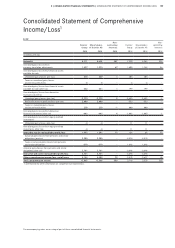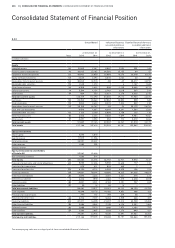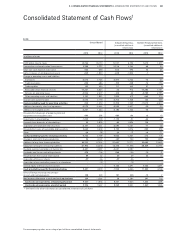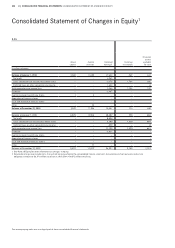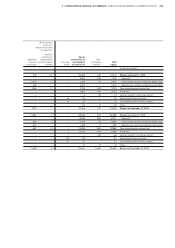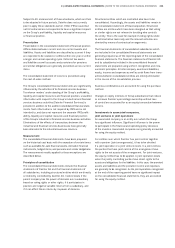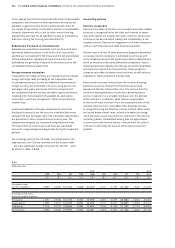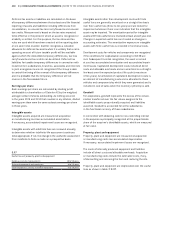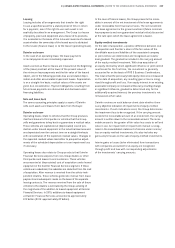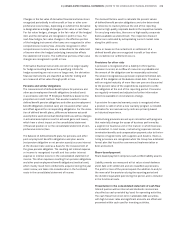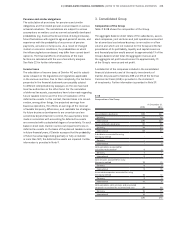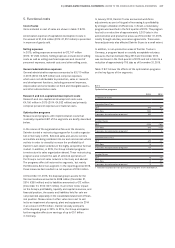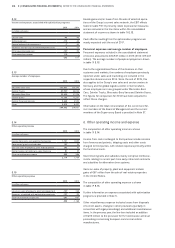Mercedes 2015 Annual Report Download - page 202
Download and view the complete annual report
Please find page 202 of the 2015 Mercedes annual report below. You can navigate through the pages in the report by either clicking on the pages listed below, or by using the keyword search tool below to find specific information within the annual report.E | CONSOLIDATED FINANCIAL STATEMENTS | NOTES TO THE CONSOLIDATED FINANCIAL STATEMENTS 209
Leasing
Leasing includes all arrangements that transfer the right
to use a specified asset for a stated period of time in return
for a payment, even if the right to use such asset is not
explicitly described in an arrangement. The Group is a lessee
of property, plant and equipment and a lessor of its products.
It is evaluated on the basis of the risks and rewards of a leased
asset whether the ownership of the leased asset is attributed
to the lessee (finance lease) or to the lessor (operating lease).
Daimler as lessee
In the case of an operating lease, the lease payments
or rental payments are immediately expensed.
Assets carried as finance leases are measured at the beginning
of the (lease) contract at the lower of the present value of
the minimum lease payments and the fair value of the leased
object, and in the following periods less accumulated depre-
ciation and other accumulated impairment losses. Depreciation
is on a straight-line basis; residual values of the assets are
given due consideration. Payment obligations resulting from
future lease payments are discounted and disclosed under
financing liabilities.
Sale and lease back
The same accounting principles apply to assets if Daimler
sells such assets and leases them back from the buyer.
Daimler as lessor
Operating leases relate to vehicles that the Group produces
itself and leases to third parties or vehicles that the Group
sells and guarantees to buy back or guarantees a residual value.
These vehicles are capitalized at (depreciated) cost of pro-
duction under leased equipment in the industrial business and
are depreciated over the contract term on a straight-line basis
with consideration of the expected residual values. Changes in
the expected residual values lead either to prospective adjust-
ments of the scheduled depreciation or to an impairment loss
if necessary.
Operating leases also relate to Group products that Daimler
Financial Services acquires from non-Group dealers or other
third parties and leases to end customers. These vehicles
are presented at (depreciated) cost of acquisition under leased
equipment in the Daimler Financial Services segment. If these
vehicles are subsidized, the subsidies are deducted from the cost
of acquisition. After revenue is received from the sale to inde-
pendent dealers, these vehicles generate revenue from lease
payments and subsequent resale on the basis of the separate
leasing contracts. The revenue received from the sale of these
vehicles to the dealers is estimated by the Group as being of
the magnitude of the addition to leased equipment at Daimler
Financial Services. In 2015, additions to leased equipment
at Daimler Financial Services amounted to approximately
€12 billion (2014: approximately €9 billion).
In the case of finance leases, the Group presents the receiv-
ables in amount of the net investment of the lease agreements
under receivables from financial services. The net investment
of a lease agreement is the gross investment (future minimum
lease payments and non-guaranteed residual value) discounted
at the rate upon which the lease agreement is based.
Equity-method investments
On the date of acquisition, a positive difference between cost
of acquisition and Daimler’s share of the fair values of the
identifiable assets and liabilities of the associated company
or joint venture are determined and recognized as investor
level goodwill. The goodwill is included in the carrying amount
of the equity-method investment. With step acquisition of
an equity interest by which significant influence or joint control
is achieved for the first time, the investment is generally
accounted for on the basis of IFRS 3 Business Combinations.
This means that the previously held equity interest is remeasured
on the date of acquisition; any resulting gain or loss is recog-
nized through profit and loss. If an equity interest in an existing
associated company is increased without any resulting change
in significant influence, goodwill is determined only for the
additionally acquired interest; the previous investment is not
remeasured at fair value.
Daimler reviews on each balance-sheet date whether there
is any objective indication of impairments of equity-method
investments. If such indications exist, the Group determines
the impairment loss to be recognized. If the carrying amount
exceeds the recoverable amount of an investment, the carrying
amount is written down to the recoverable amount. The recov-
erable amount is the greater of fair value less costs to sell and
value in use. An impairment or impairment reversal is recog-
nized in the consolidated statement of income under income/
loss on equity-method investments; this also includes any
gains and/or losses on the sale of equity-method investments.
Interim gains or losses (to be eliminated) from transactions
with companies accounted for at-equity are recognized
through profit and loss with corresponding adjustments
of the investments’ carrying amounts.


